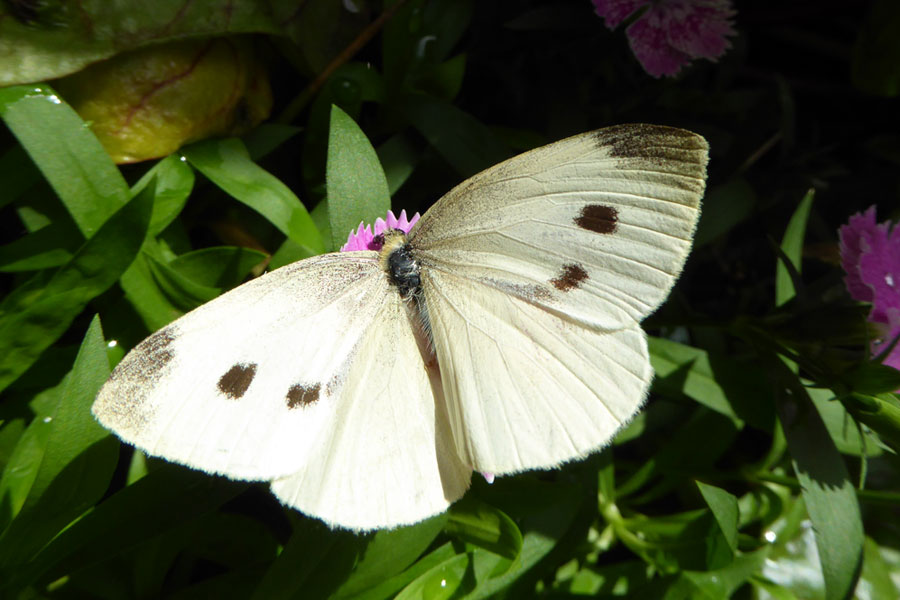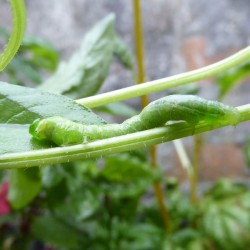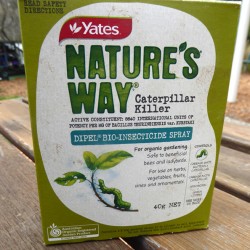Cabbage butterfly
 This 5 cm large butterfly is a common sight in the garden. It has white wings with black tips and dots. There are several species of cabbage butterfly that look and behave very similar. Other names of those butterflies are large white butterfly or small white or simply white butterfly depending on the species.
This 5 cm large butterfly is a common sight in the garden. It has white wings with black tips and dots. There are several species of cabbage butterfly that look and behave very similar. Other names of those butterflies are large white butterfly or small white or simply white butterfly depending on the species.
The larvae of the cabbage butterfly are caterpillars and they feed on leaves. They prefer all plants of the cabbage family and nasturtiums. Those plants contain a lot of mustard oils and eating them make the caterpillars smell and taste less appealing for predators like birds.
There are a variety of shapes of caterpillars depending on their stage of development and species. We often find smooth skinned bright green and yellowish/greenish ones that are covered in black hairs. They are up to 5 cm long and 0.5 cm thick.
These caterpillars are a serious pest because they feed voraciously. Some birds prey on them but they don’t seem to be a very popular food. Predatory wasps and spiders reduce the amount of caterpillars.
It’s very important to monitor the impact of caterpillars in the garden. Affected plants show leaf damage. One can often find black droppings as a telltale sign.
Plenty of things can be done to make the garden less attractive to white butterflies and their caterpillars, read more about dealing with caterpillars.
In case of a more serious advent of caterpillars we treat the plants with a bacterial spray that stops the caterpillar activity, read more here.
Dealing with caterpillars
Caterpillars are the larvae of butterflies and moths. They are voracious eaters can can easily destroy a crop. The two most common caterpillars we deal with in our garden are the cabbage butterfly larvae and the larvae of the tomato bud worm. Preventive measures to avoid caterpillar problems Plant companion plants! This confuses the parent [more]
Dipel
Dipel is a product used to control caterpillars. It is approved for use in organic gardening. It is made from naturally occurring bacteria (Bacillus thuringiensis) and is safe on bees, ladybirds, birds, fish, mammals and pets. Dipel has no withholding period: vegies, fruit and salad ingredients can be washed and eaten immediately after spraying. [more]

